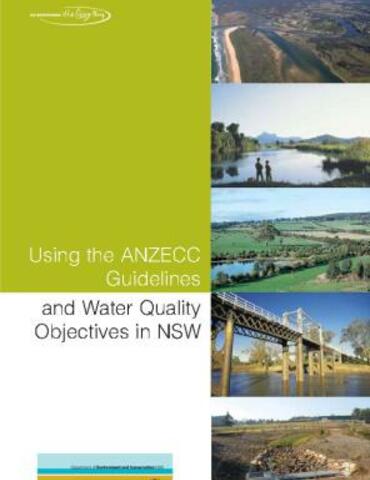Working in a National Framework
Management of water quality throughout Australia has a broadly common approach developed cooperatively by the states and territories and detailed in the National Water Quality Management Strategy The Strategy is grounded in the principles of ecologically sustainable development, especially the precautionary principle and the conservation of biological diversity and ecological integrity which in turn flow through to inter-generational equity. This strategy includes policies; an implementation guideline; a series of water quality benchmarks; and guidelines for managing groundwater, stormwater and effluent, and on water recycling. It is a fundamental input to the NSW EPA's decision-making on pollution that can have an impact on the water quality in our waterways.
The central technical reference document within the Strategy is the Australian and New Zealand guidelines for fresh and marine water quality (2000) (ANZECC guidelines). These guidelines provide an agreed framework for assessing water quality according to whether the water is suitable for a range of environmental values, including human uses.
The ANZECC guidelines include extensive lists of chemical and other parameters such as temperature that can affect waterways. Default trigger values are provided for the listed parameters and these are used to help guide local decision-making in achieving environmental values. The ANZECC guidelines also recognise the natural variability that can occur between waterways due to geology or climate and provide a method for deriving specific local criteria.
Using the ANZECC guidelines and following consultation with communities, the NSW Water Quality and River Flow Objectives were developed and are the agreed environmental values and long-term goals for NSW surface waters. They set out:
- the community's desired values and uses for our rivers, creeks, estuaries and lakes (e.g. healthy aquatic life, water suitable for recreational activities like swimming and boating, and drinking water)
- a range of water quality indicators to help assess whether the current condition of our waterways supports those values and uses.
The POEO Act provides for unambiguous consideration of matters relating to the environmental values of water by the EPA when exercising its licensing functions and when an Appropriate Regulatory Authority issues prevention notices concerning water pollution under section 96 of the POEO Act.
Download

Using the ANZECC Guidelines Using the ANZECC Guidelines
